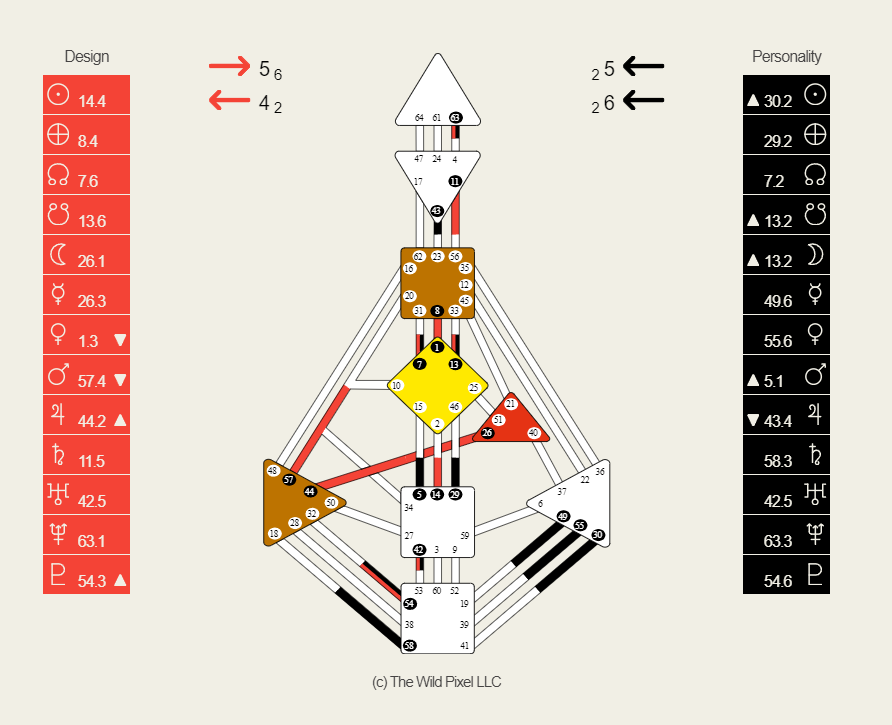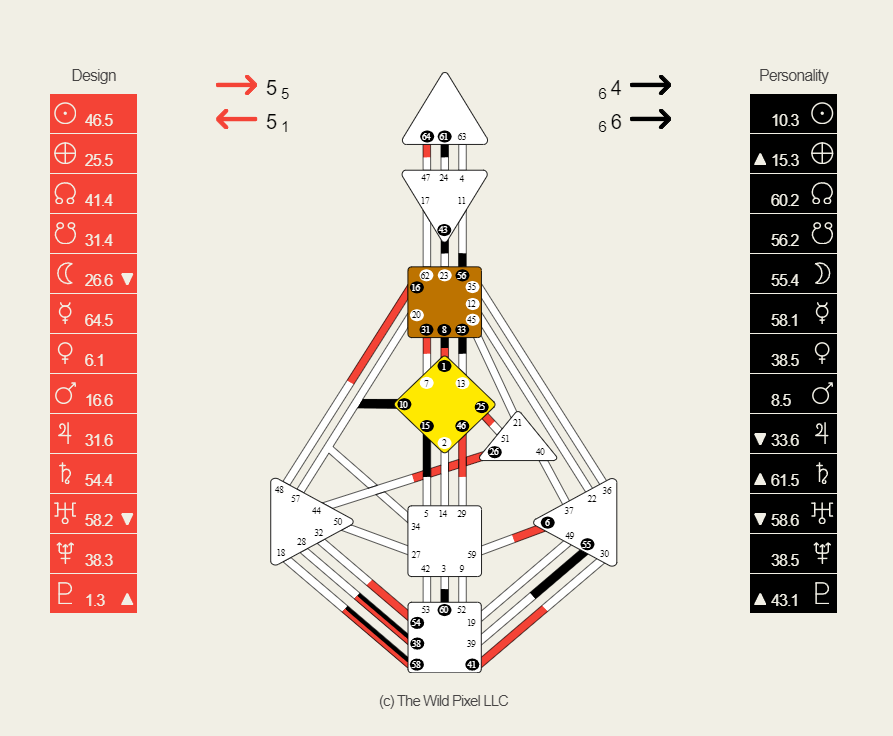Using Human Design for your Children
This weekend is Mother’s Day. I always found this “holiday” odd because I am a mother and a parent every day and don’t feel like I need a special day to receive recognition and flowers. On the other end, I take care to gift parents something on their children’s birthdays because it marks the day that they brought their child into the world.
I’m a Projector and I tend to enter places where the recognition already exists. From the moment my children first learned to say “mommy” I received the recognition that I am accepted as their parent. This is why I generally do not subscribe to Mother’s Day.
Instead, I’d like to take this time to celebrate the children that have come into our lives, whether through a planned/unplanned pregnancy, adoption, surprise, or even as an aftermath of trauma and/or violence.
As you work through this blog post, please remember that children are as complicated, multi-layered and contradictory as we are. There may be parts of their chart that clash, giving you mixed information. You may see that your child is inclined to melancholy or whimsical behavior. It’s important to set expectations aside and see your child with eyes that accept differentiation.
How to generate your child’s Human Design chart
The software I use to generate all charts, including my client charts, is The Wild Pixel’s chart generator
For this blog post, we’ll be focusing on your child’s type and strategy.
You do not need any upgraded versions of this software in order to use this post.
Reading for adults versus children
I don’t often read charts for children because there is a stark difference between adult charts and children’s charts.
To name a few:
Children have not experienced the amount of conditioning that an adult has.
Children are more likely to already be living in their design.
Children have the opportunity to live a lifestyle close to their design if their guardian(s) are informed of the system.
Adults have cultural and societal expectations to “live up” to.
Adults go through the deconditioning process to determine what is external influence and what is part of their design.
Adults go through the different astrological milestones (Saturn return, Chiron return, etc.) and experience different expressions in their design based on them.
I’m putting this out there into the world: right now it’s 2022. While there is an influx of Human Design readers who focus on entrepreneurship and manifesting money, I wish for more readers (especially those with a background in childcare) who specialize in reading family charts or children’s charts.
After all, Human Design was originally for us to understand the next generation.
Raising a Manifestor child
Manifestors have the strategy to inform and initiate.
This can be a gut punch to cultural and societal expectations of how children interact with their parents. It can be jarring to hear your child tell you something instead of asking for permission. (If you come from a background where younger/female-identifying children are traditionally taught not to speak out of turn, this adds an extra layer of complication).
Manifestor children need alone time and space to explore their genius. They are filled with independent, sometimes stubborn ideas, about how things can be improved or stripped down completely. They are descended from those who established and/or tore down “the way things are.”
They may get into trouble for questioning authority while asserting their own.
Encourage your Manifestor child to ask for permission rather than tell people what they’d like to do. Guardians are still tasked with taking care of the Manifestor child and ensuring their safety. If they experience being dismissed by authority figures, such as relatives, teachers, etc. it’s worth reminding the Manifestor child that this is how life can be - not everyone will find them agreeable, but it shouldn’t stop them from pursuing what they believe to be worth the effort.
✨ Tip for Manifesting Generator/Generator parents: Manifestors do not have consistent access to the regenerative sacral pulse that you do. They have access to energy, but it manifests differently than yours. The Manifestor works quickly when s/he feels ready, but will rarely experience all-day-long access to said energy. They may need to recuperate even if you’re not worn out yet.
Raising a Manifesting Generator child
Manifesting Generators have the strategy to inform and respond.
It’s important to note that they are not a mix of Manifestors + Generators. They are Generators who have a direct connection to their throat center, which means the information coming from their sacral center (the regenerative, talking battery pack all Generators have) will be vocalized.
Generator-type children require activity and an outlet for their regenerative energy. Martial arts, time spent outside, or athletic ventures are great examples of how they can spend their energy.
Manifesting Generator children experience bursts of sudden energy. You’ll see them lounging around for one second, flying around the home the next, and then back to lounging around again. Unlike classic Generators, Manifesting Generators are more of a bonfire than a slow-burning candle.
These children tend to be talkative, expressing the messages that come from their sacral center. They may ramble and tell long-drawn-out stories.
✨ Tip for non-Generator parents: Raising a Manifesting Generator/Generator child can feel overwhelming, especially because you may not feel like you can keep up with them. Working through parental guilt, asking for help, and taking breaks can alleviate some of the exhaustion. Parents, especially stateside, are often under scrutiny if they need an extra set of hands, but remember that living in your design usually means bucking the status quo.
Raising a Generator child
Generator children have the strategy to respond.
They have a sacral pulse (regenerative battery back) that keeps them energetically up. One way to encourage your child’s relationship with its sacral center is to give them choices rather than open-ended questions. (This also applies to Manifesting Generator children).
For example, if you wanted to ask your Generator child what they’d like for lunch, you might ask if they’re prefer:
Fruit
Hot dogs
Yogurt
The child can run through each option with their sacral center and announce what they’d prefer. If they do not have a defined throat center, they may simply reach out for their preferred option rather than tell you.
Another way I work with my Generator type children is to give them a 1-5 scale. How tired are you? “4.” How hungry are you? “2.” This helps create a habit of checking in with the sacral that can help them navigate adolescence and adulthood. This also veers them away from saying, “I don’t know,” because they struggle with open-ended question.
✨ Tip for non-Generator parents: Raising a Manifesting Generator/Generator child can feel overwhelming, especially because you may not feel like you can keep up with them. Working through parental guilt, asking for help, and taking breaks can alleviate some of the exhaustion. Parents, especially stateside, are often under scrutiny if they need an extra set of hands, but remember that living in your design usually means bucking the status quo.
Raising a Projector child
Projector children have the strategy to wait for recognition and invitations.
Projector children may feel out of place because of their penetrative and piercing aura. Guardians can be caught off-guard with how insightful a Projector child can be - reading them like a book. Because of this, Projector children may be dismissed or told to mind their place. They need to be genuinely invited to share their thoughts or it will often become ignored.
It’s worth letting your Projector child know that they are welcome to think and form opinions as they please, but not everyone will be open to hearing it. They should “save the thoughts for those who want to hear it.” This can help prevent the Projector child from recluse and refusal to share at all, especially when they become adults.
✨ Tip for Manifesting Generator/Generator parents: Projector children do not have comparable energy to Manifestor or Manifesting/Generator children. Believe them when they express being tired. Don’t push them to do multiple physically based extra-curricular activities if they don’t want to do it.
Raising a Reflector child
Reflector children have the strategy to wait a lunar cycle.
Reflector children are playful, whimsical, and has a tendency to see the joyful pleasures of life. They’re usually optimistic and have a perspective that the rest of us have difficulty accessing. Being the 1% of the population, they are the rarest of all Human Design types (though rarity has no hierarchy in Human Design). They are also a lunar type, reflecting the other four solar types.
Though all children need a healthy environment in order to thrive, Reflector children specifically require this type of setting because they “reflect” what is happening around them.
If you are ever curious about the truth behind relationships, people, and environments, look to your Reflector child’s change in behavior or expression when in the presence of these spaces.
✨ Tip for non-Reflector parents: Reflector children are understanding and seem wise beyond their age. Their incarnation into your world can be unsettling, especially if they express truths that you are not ready to work through. They may carry burdens or baggage that is conditioned by those around them. Give them ample space and encourage their hobbies so they can “discharge other people’s energy” and be in their own aura.
How your chart interacts with your child’s chart
Why is it important to also see how your chart interacts with your child’s chart? You are likely the person your child spends the most time with and you naturally condition them. (Know that conditioning is not necessarily a “bad word” - it happens and can be a source of teaching. This is why “no man is an island.)
Here is my chart and my child’s chart:
I am a Projector while my son is a Manifesting Generator.
When we’re in the same room together, this is what happens:
You can see that I go from having two defined centers to having everything defined. I am deeply conditioned in the presence of my son, while my son experiences four more centers defined while he’s with me. We experience ourselves differently around each other.
Because people “bring out” a different version of us depending on who we are around.




